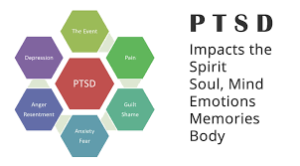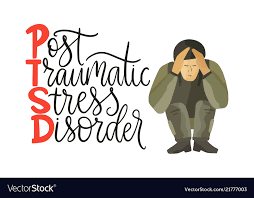Do you know……. Today, Monday, May 27th, we Americans across the country, will remember the brave men and women who sacrificed their lives for our country, for our freedom, for our safety, so that we can sleep peacefully. We salute and applaud our Military Personnel. “Memorial Day isn’t just about honoring veterans, its honoring those who lost their lives. Veterans had the fortune of coming home. For us, that’s a reminder of when we come home we still have a responsibility to serve. It’s a continuation of service that honors our country and those who fell defending it.” -Pete Hegseth

On this Memorial Day, I thought of talking about PTSD. What is PTSD (Post Traumatic Stress Disorder)? It is a psychiatric disorder that can occur in people (of any ethnicity, nationality or culture, and any age) who have experienced or witnessed a traumatic event such as; a natural disaster, a serious accident, a terrorist act, war/combat, rape or other violent personal assault. PTSD affects approximately 3.5 percent of U.S. adults and women are twice as likely as men to have PTSD. Military personnel are among the most at-risk populations for exposure to traumatic events and combat-related stress disorders.
It is natural to feel afraid and be in emotional disharmony during and after a traumatic experience. Re-experiencing symptoms, from the person’s own thoughts, feelings, anger, distressing dreams, objects, flashbacks, or situations, could trigger the past and may cause problems in a person’s everyday routine, relationships. Not everyone exposed to a traumatized event is diagnosed with PTSD. Most people recover from initial symptoms naturally. Those who continue to experience problems may be diagnosed with PTSD. People who have PTSD may feel stressed or frightened even when they are not in danger. Negative thoughts and feelings about oneself or others (e.g., “I am bad,” “No one can be trusted”), ongoing fear, horror, anger, guilt or shame, less interest in activities previously enjoyed, feeling detached or estranged from other, being irritable and having angry outbursts, behaving recklessly or in a self-destructive way, being easily startled, lack of sleep and concentration
There is need for comprehensive interventions based upon both Neuroscientific

Aromatherapy for PTSD
information and new integrative care modalities. Individuals with PTSD are often treated with psychotherapeutic drugs, but it should be handled in conjunction with other safe alternative healthcare approach like clinical Aromatherapy. Though, several research are being conducted to validate the effect of aroma on PTSD and emotional distress, we are familiar with the therapeutic properties of Essential Oils and their physiological effects on brain to heal the mind-body. Essential oils directly impact the brain’s Limbic system where Amygdala is located. This is the region of the brain that activates our fight and flight response at the time of danger and trauma. Special blends of essential oils as well as applying oils to specific points (acupoints) on the body help to calm the nervous system and to harmonize our Qi (energy or life force of the body) and Shen (cognitive and emotional life).
Here are the most widely used essential oils for PTSD:
Lavender, Bergamot, Mandarin, Orange,
Rose, Chamomile, Ylang ylang, Clary sage, Frankincense, Sandalwood, Vetiver, Geranium
Calming Emotional Trauma Blend:
3 drops Rose or Geranium Essential Oil
2 drops Frankincense Essential Oil
2 drops sweet orange Essential Oil
15ml carrier oil (Almond or Grapeseed Oil)
Add essential oils to a dark 15ml glass euro vial, pour carrier oil, close the lid, mix, label. Apply on pulse points like, wrist, temple, back of neck, or inhale directly 2-3X daily or as needed.
Om Healing………..Uma
(Founder of AromaWellness)
visit aromawellness.net, to order
Call 414-793-8645, to schedule your consultation appointment





Recent Comments